- Информация о материале
-
30
нояб
-
Автор: МБЦ
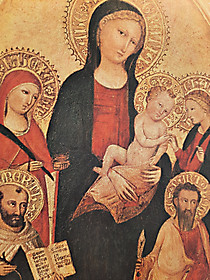
The exhibition of Western European art begins with fourteenth century Italian paintings. Among its most significant canvases of the period is the Mystic Marriage of St Catharine painted by a master of the Lorenzo di Bicci circle. In this canvas the artist, faithful to the traditions of icon painting, created an extremely tender image of his subject.
The two greatest Venetians of the late Renaissance, Jacopo Bassano and Tintoretto, are represented by their paintings Adoration of the Shepherds and Apollo and Marsyas.
The Netherlands School is represented by Pieter Pourbus who achieved the outmost simplicity and expressiveness by using a restrained colour scheme.
The Gallery boasts of several works by two prominent seventeenth century Dutch artists, Pieter Claesz and Jan van Goyen. A still life by Pieter Claesz, a mayor figure in this genre of painting, is executed with extreme subtlety, in restrained colour gamut.
Подробнее...
- Информация о материале
-
29
нояб
-
Автор: МБЦ
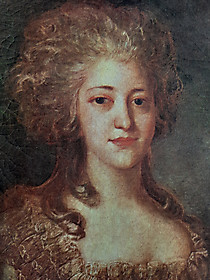
The Department of Russian Art spans a period starting from the eighteenth century. The portraits of F. Rokotov and D. Levitsky exhibited in this department provide an illuminating insisight into this genre’s flourishing in eighteenth century Russia. The Portrait of Unknown Woman by F. Rokotov is notable for its consummate draughtsmanship. A deep psychological insight into the inner world of the sitter is characteristic of the luxurious formal The Portrait of Unknown Woman by D. Levitsky.
One of the finest works in the gallery’s collection of painting of the first half of the nineteenth century is the Portrait of M. Bek, executed by K. Briullov in a refined, bright colour scale.
Works of Vasily Surikov, a leading figure in Russian realistic painting of the second half of the nineteenth century, is represented by his Head Studies of a Gossak, Portrait of a Woman, studies for the picture Stepan Razin and others. Vasily Polenov, who developed the traditions of the lyrical landscape, was one of the originators of plein air painting. His Farmyard. Bulgaria kept at the Gallery is charming in its sincerity of feeling and its clarity and resonance of colours.
Подробнее...
- Информация о материале
-
16
нояб
-
Автор: МБЦ
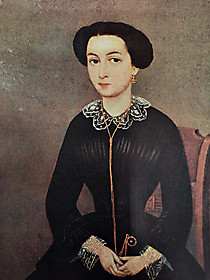
In the course of their age-long history the people of Armenia made superb contributions to all forms of visual arts. Before the foundation of the State Museum of Armenia (the Museum) in 1921, works of Armenian artists had been the property of private collectors and monasteries.
The Museum incorporated several departments, including the department of arts whose nucleus was formed by a limited number of canvases purchased from the exhibitions sponsored by the society of Armenian Artists in Erevani. In 1024 the Museum benefited considerably by the transfer to it of a modest but valuable collection from the former Lazarev Institute of Oriental Languages in Moscow, the bulk of which consisted of portraits. Among these were works by such outstanding masters of Russian painting as D. Levitsky and V. Tropinin, as well as some sculptures by I. Martos and others. A truly significant acquisition was a collection of paintings and grofic works from the Matenadaran (a repository of books) in Echmiadzin. Subsequent additions came from the Hermitage, the Russian Museum and the State Museum Reserve. By 1935 the Department of Art had so substantially expanded that it was transformed into a separate museum of fine arts, known since 1947 as the Art Gallery of Armenia.
Подробнее...
- Информация о материале
-
25
нояб
-
Автор: МБЦ
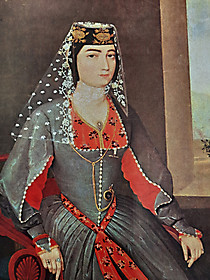
The Gallery’s fullest and most comprehensive department is that of Armenian painting. The exhibition of the department opens with copies of sixth century frescoes and embraces all the characteristic trends of the development of Armenian visual arts from the dawn of history to the present day.
In addition to icons , there is a limited number of seventeenth and eighteenth century portraits in which the artists, following the precepts of medieval art, attempted to reproduce in the most painstaking manner the outward features of a concrete personality.
Подробнее...
- Информация о материале
-
07
нояб
-
Автор: МБЦ
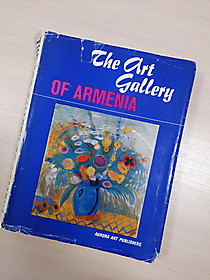
Искусство - Музеи художественные - Живопись - Изобразительное искусство
The Art Gallery of Armenia. - Leningrad : Aurora, 1975. - 376 с. - 16-20. ИНО 18087F
85.14Англ
A 81
The Art Gallery of Armenia is one of the richest museums of Europe and Asia. Its extensive collection of Armenian, Russian and Western European art numbers over 19,000 items. It was in 1921 when the Museum of Armenia was founded. In those days it incorporated four departments: archaeological, ethnographical, art and history. The foundation of the art department turned a new page in the cultural life of the Armenian people. In 1935 the art department of the Museum of Armenia was transformed into the Museum of Fine Arts.
Характеристики книги:
Год выпуска: 1975
Язык издания: Английский
Формат издания: 60x90/8
Оригинальное название: The Art Gallery of Armenia, Erevan
Государственная картинная галерея Армении, Ереван
Тип книги: Букинистика
Издательство: Аврора
Количество страниц: 376





























